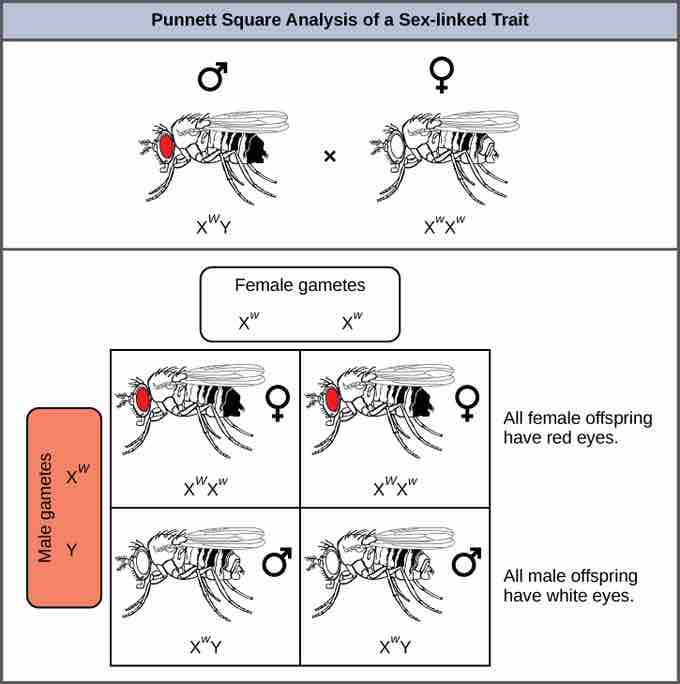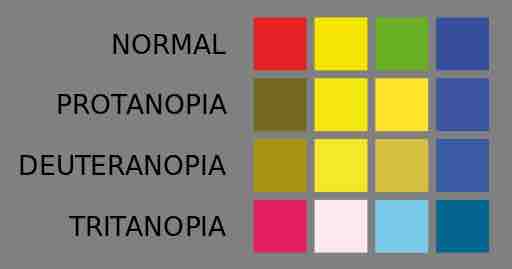Sex Determination
In humans, as well as in many other animals and some plants, the sex of the individual is determined by sex chromosomes. However, there are other sex determination systems in nature. For example, temperature-dependent sex determination is relatively common, and there are many other types of environmental sex determination. Some species, such as some snails, practice sex change adults start out male, then become female. In tropical clown fish, the dominant individual in a group becomes female while the others are male.
The sex chromosomes are one pair of non-homologous chromosomes. Until now, we have only considered inheritance patterns among non-sex chromosomes, or autosomes. In addition to 22 homologous pairs of autosomes, human females have a homologous pair of X chromosomes, whereas human males have an XY chromosome pair. Although the Y chromosome contains a small region of similarity to the X chromosome so that they can pair during meiosis, the Y chromosome is much shorter and contains many fewer genes. When a gene being examined is present on the X chromosome, but not on the Y chromosome, it is said to be X-linked.
Human male karyotype
A human males possesses XY chromosomes, as seen in the bottom left of this karyotype. The Y chromosome is much shorter than the X chromosome, unlike all of the other homologous chromosome pairs.
X-Linked Traits
Insects also follow an XY sex-determination pattern and like humans, Drosophila males have an XY chromosome pair and females are XX. Eye color in Drosophila was one of the first X-linked traits to be identified, and Thomas Hunt Morgan mapped this trait to the X chromosome in 1910.
In fruit flies, the wild-type eye color is red (XW) and is dominant to white eye color (Xw). Because this eye-color gene is located on the X chromosome only, reciprocal crosses do not produce the same offspring ratios. Males are said to be hemizygous, because they have only one allele for any X-linked characteristic. Hemizygosity makes the descriptions of dominance and recessiveness irrelevant for XY males because each male only has one copy of the gene. Drosophila males lack a second allele copy on the Y chromosome; their genotype can only be XWY or XwY. In contrast, females have two allele copies of this gene and can be XWXW, XWXw, or XwXw.

Eye color in Drosophila is an example of a X-linked trait
In Drosophila, the gene for eye color is located on the X chromosome. Clockwise from top left are brown, cinnabar, sepia, vermilion, white, and red. Red eye color is wild-type and is dominant to white eye color.
X-Linked Crosses
In an X-linked cross, the genotypes of F1 and F2 offspring depend on whether the recessive trait was expressed by the male or the female in the P1 generation. With regard to Drosophila eye color, when the P1 male expresses the white-eye phenotype and the female is homozygous red-eyed, all members of the F1 generation exhibit red eyes. The F1 females are heterozygous (XWXw), and the males are all XWY, having received their X chromosome from the homozygous dominant P1 female and their Y chromosome from the P1 male.
A subsequent cross between the XWXw female and the XWY male would produce only red-eyed females (with XWXW or XWXw genotypes) and both red- and white-eyed males (with XWY or XwY genotypes). Now, consider a cross between a homozygous white-eyed female and a male with red eyes. The F1 generation would exhibit only heterozygous red-eyed females (XWXw) and only white-eyed males (XwY). Half of the F2 females would be red-eyed (XWXw) and half would be white-eyed (XwXw). Similarly, half of the F2 males would be red-eyed (XWY) and half would be white-eyed (XwY).

Punnett square analysis of Drosophila eye color
Punnett square analysis is used to determine the ratio of offspring from a cross between a red-eyed male fruit fly (XWY) and a white-eyed female fruit fly (XwXw).
X-Linked Recessive Disorders in Humans
Sex-linkage studies provided the fundamentals for understanding X-linked recessive disorders in humans, which include red-green color blindness and Types A and B hemophilia. Because human males need to inherit only one recessive mutant X allele to be affected, X-linked disorders are disproportionately observed in males. Females must inherit recessive X-linked alleles from both of their parents in order to express the trait.

Color perception in different types of color blindness
In this chart you can see what people with different types of color blindness can see versus the normal color vision line at top.
Recessive Carriers
When they inherit one recessive X-linked mutant allele and one dominant X-linked wild-type allele, they are carriers of the trait and are typically unaffected. Carrier females can manifest mild forms of the trait due to the inactivation of the dominant allele located on one of the X chromosomes. However, female carriers can contribute the trait to their sons, resulting in the son exhibiting the trait, or they can contribute the recessive allele to their daughters, resulting in the daughters being carriers of the trait. Although some Y-linked recessive disorders exist, typically they are associated with infertility in males and are, therefore, not transmitted to subsequent generations.

Inheritance of a recessive X-linked disorder
The son of a woman who is a carrier of a recessive X-linked disorder will have a 50 percent chance of being affected. A daughter will not be affected, but she will have a 50 percent chance of being a carrier like her mother.